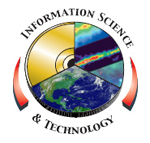
Please Note: The content on this page is not maintained after the colloquium event is completed. As such, some links may no longer be functional.
Building 3 Auditorium - 3:30 PM
(Refreshments at 3:00 PM)
| Evolution of data systems for processing, archiving and distributing global science products from the MODIS perspective | |
|
Edward Masuoka 2006 IS&T Award Recipient
|
Abstract: A decade ago, the center of mass of NASA’s Earth science data systems shifted from science-led processing efforts funded by RTOPS and reimbursable agreements to the development of a unified data system responsible for processing, archiving and distributing Earth science data products, the EOS Data and Information System (EOSDIS). Over its 13 year history, EOSDIS has evolved from an initial concept of 9 Distributed Active Archive Centers (DAACs) running a common system to mix of DAACs and science investigator-led processing systems (SIPS). Evolution to date has been driven by the desire to make data system more responsive to needs of individual mission-focused science teams and as a means of controlling and reducing costs. Three new goals are driving data system evolution within the broad Earth science data system community which includes EOSDIS. These are:
Examples of how advances in information technology have enabled science data systems to respond to the needs of their communities and a discussion of the features of science measurement teams at Goddard will be described in the context of the evolution of science data systems for the Moderate-resolution Imaging Spectroradiometer (MODIS). Bio: JamesEdward Masuoka is the Head of the Terrestrial Information Systems Branch at NASA Goddard Space Flight Center. For the last 10 years, he has led a team of civil servants and contractors developing software and science processing systems for the MODIS (Moderate-resolution Imaging Spectroradiometer) instruments on the Earth Observing System's Terra and Aqua spacecraft.
|
| Information Technology Advancement for Real Time Hurricane Forecasting | |
|
Michael Seablom
|
Abstract: Recent projects by NASA's Modeling, Analysis, and Prediction (MAP) have produced important ancillary benefits for the advancement of information technology as applied to numerical modeling. During the summers of 2005 and 2006, the MAP program initiated efforts to bring NASA's Earth Science atmospheric models and satellite-based observations to bear on the problem of predicting the formulation, intensification, and movement of tropical cyclones. During 2005 over 700 tropical cyclone forecasts were produced on NASA supercomputers that met stringent?timeliness requirements for real time inter-comparisons with operational models. This year the models are being executed to support the NASA African Monsoon Multidisciplinary Analyses (NAMMA) field campaign in which scientists are studying the structure and evolution of African Easterly Waves. The projects required the development of an end-to-end information system for model initialization, execution, and dissemination of results to NASA scientists and forecasters in the field. A high-performance, data-centric computing paradigm has evolved from the development efforts of these projects that will likely have broad applicability for the development and validation of numerical models in the future.
Bio: Mr. Michael Seablom is the head of the NASA Goddard Software Integration & Visualization Office (SIVO). He has the responsibility for providing a broad array of information technology services to the Earth Sciences Division in the areas of software engineering for high performance numerical modeling applications, scientific visualizations, observing systems simulation support, and education and public outreach. His office works closely with NASA's Modeling, Analysis, and Prediction (MAP) program in providing software integration services for the development of Earth system models. His technical expertise is in the areas of scientific software development and atmospheric data assimilation. |
IS&T Colloquium Committee Host: Ben Kobler
